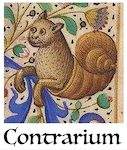Sweden. Day 27. Uppsala: runes and rain.
Friday was sunny and nice the whole day: perfect for a walk around Stockholm. Saturday, however, began foggy and rainy. Since I did not get many interviews in Stockholm, except with the woman at the reception of the Strindberg Museum, who gave monosyllabic answers, and weather wasn’t improving, I thought it was time to leave.
I took the train from Stockholm to Uppsala and in about 35 minutes I was already there. At Uppsala I met Karin, a former colleague from student exchange program Georgia Rotary Student Program (GRSP). We hadn’t seen each other in 28 years! But she still looks pretty much the same — I wish I could say the same of myself.
We met at the English Bookshop, then we went to a nice coffee shop nearby. It is supposedly an old coffee shop very popular with the students of the Uppsala University. Because Uppsala is traditionally a university town, and Uppsala University is the oldest university in Sweden, founded in 1477!
With Karin as a guide, I took a short tour of downtown Uppsala. I saw the oldest building of the university, the University Hall. Nearby, in a park, there are a few old rune stones. Rune stones are stones marked with runes, or the Old Norse alphabet.
They were typically memorials for the dead, but not necessarily grave markers. They could be put up on a road, to commemorate a deceased family member. Apparently the region of Uppsala is the place where most of those stones can be found — perhaps 70% of the totality of rune stones in the world were found in the region.
The ones I saw were dated from around 930 a.C., but even though they display an ancient alphabet, many of them already have Christian symbols, such as crosses. The Christianization of the country was happening right about then.
Nearby, the Uppsala Cathedral is a monumental church, consecrated in 1435 but with its construction complete only around 1470. It is the tallest church in Scandinavia and one of the oldest, although it was partially destroyed and rebuilt a number of times.
Built still when Sweden was a Catholic country, it contains the relics of King Eric IV of Sweden, also known as Eric the Saint, as he was later canonized. But the Cathedral is today a Protestant church, as has been ever since King Gustav Vasa joined the Reformation and confiscated all the Catholic Church assets. King Vasa is also buried in this church, together with his three wives (consecutive wives, of course).
Another famous person interred there is the 18th century mystic Emanuel Swedenborg, who would have an influence in the work of many later writers, including Jorge Luis Borges and, surely enough, August Strindberg — who, by the way, studied at Uppsala University… The circle closes. Sweden is like a small village of a country where everyone is connected.
By 2:00 PM, it was time to leave Uppsala and return to Björkö. To be honest, I was already starting to miss its isolation and tranquility of the island, and now I am happy to be back. Only that there’s a storm, or rather a hurricane, predicted to pass by the island starting tonight or tomorrow, with winds of up to 100 km/h, so we will see if the house still stands after that. It is recommended to remain inside during the storm because of the possibility of falling trees or flying objects, so I may have to miss my daily walk tomorrow… We will see…





